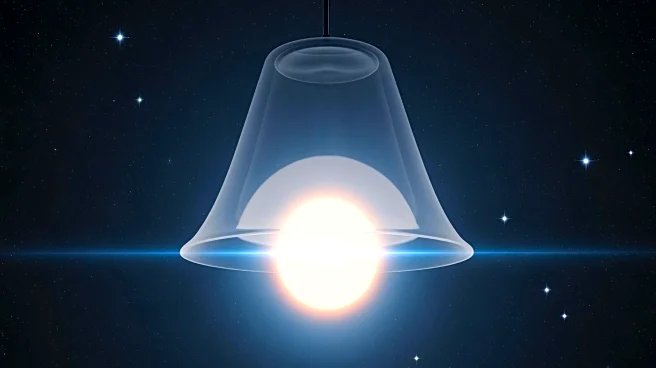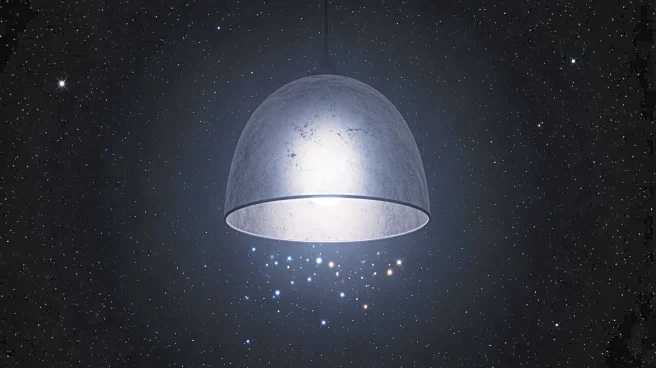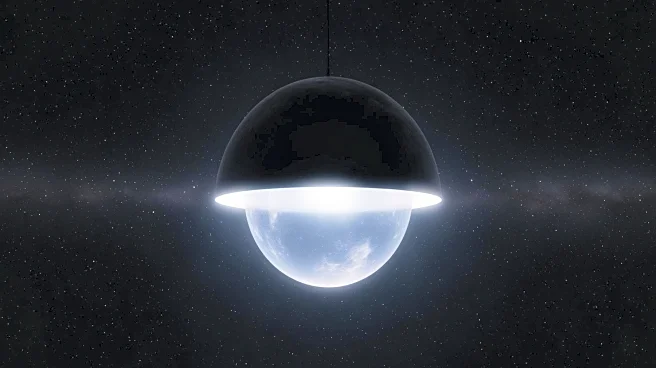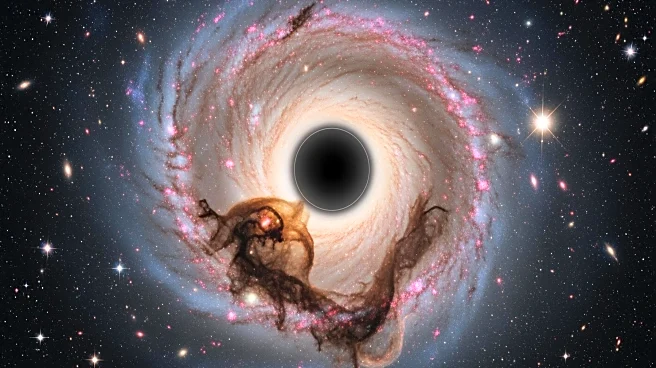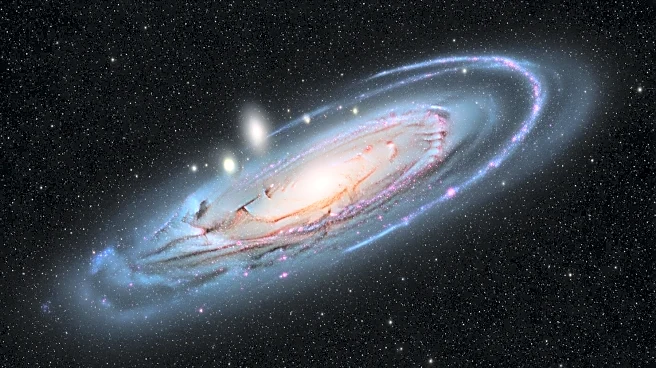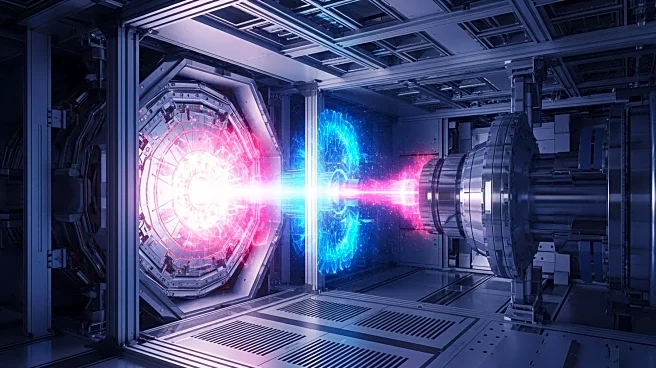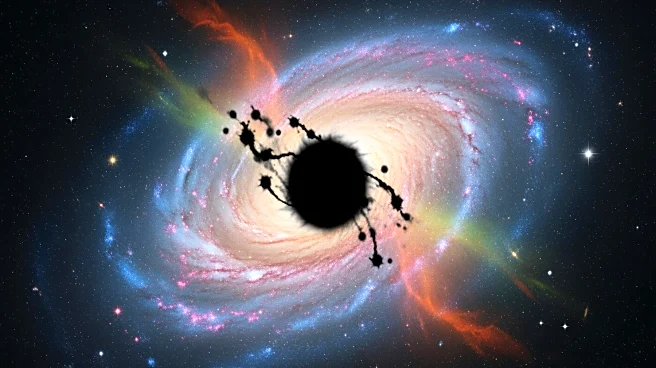What's Happening?
A recent study published in Physical Review Letters proposes that dark matter, traditionally considered invisible, might interact with light in a way that dims the light from stars. This phenomenon, termed
the 'lampshade effect,' suggests that clumps of dark matter could block light, making stars appear dimmer than they are. The study, co-authored by Melissa Diamond from Queen's University, challenges the prevailing theory that dark matter is composed of WIMPs (Weakly Interacting Massive Particles), which do not interact with light. Instead, the study focuses on MACHOs (Massive Astrophysical Compact Halo Objects), which could include dense objects like neutron stars or black holes. These MACHOs might act like cosmic lampshades, blocking some starlight and causing stars to dim. This new approach allows astronomers to use existing data sets to search for these dimming events without needing new telescope technology.
Why It's Important?
Understanding dark matter is crucial for comprehending the universe's structure and evolution. The 'lampshade effect' offers a novel method to detect dark matter, potentially leading to breakthroughs in astrophysics. If MACHOs are confirmed as a significant component of dark matter, it could reshape scientific theories about cosmic structures and the universe's composition. This research could also refine existing methods, narrowing down possibilities and guiding future studies. The implications extend to enhancing our understanding of gravitational forces and the behavior of celestial bodies, impacting fields like cosmology and particle physics.
What's Next?
Astronomers may begin utilizing the 'lampshade method' to analyze existing astronomical data for signs of MACHOs. Surveys like the Optical Gravitational Lensing Experiment (OGLE) could be instrumental in identifying these objects. If successful, this approach could lead to new discoveries about dark matter and its role in the universe. Continued research and observation will be necessary to confirm these findings and explore their implications further.
